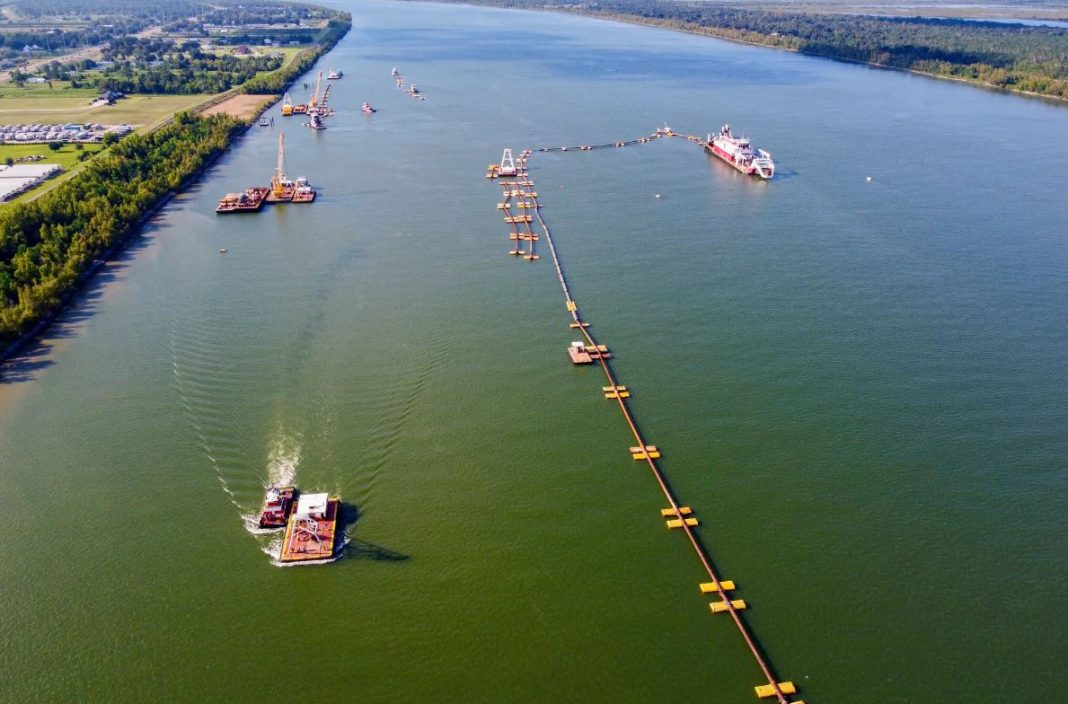Water shortages in the New Orleans area have worsened since the summer, when the Midwest experienced drought.
With the river’s water level so low, saltwater from the Gulf of Mexico is able to more easily make its way north up the Mississippi. The city’s drinking water supply, along with that of smaller communities to the south, is under risk due to saltwater intrusion.
Louisiana and U.S. Army Corps of Engineers officials are attempting to halt the entry of saltwater and bring in additional fresh water to the region ahead of a potential “saltwater wedge” reaching water treatment plants near New Orleans in October. High salt levels are problematic for many water treatment systems because they induce pipe corrosion and metal leaching.
The Army Corps of Engineers constructed a levee, or underwater sill, in the Mississippi River in July to slow the downward movement of saltwater beneath the surface of the river’s fresh water. On Friday, officials said that work to raise the sill by 25 feet will begin within days.
Even yet, they estimate that the saltwater wedge will still advance every 10–15 days regardless. The sill will be topped in due time, according to Army Corps Col. Cullen Jones, unless there is heavy rainfall shortly.
The Corps of Engineers is also purchasing barges to transport water for use in water purification plants. According to Colonel Jones, the treatment facilities will get roughly 15 million gallons in the next days, but they may need as much as 36 million gallons every day. Colonel Jones assured us that the Army Corps would do all in its power to acquire additional barges so that they could meet our demand.
In 1988, when the Mississippi River reached record low levels at its mouth below sea level, saltwater intrusion also impacted Louisiana. The situation was eased then by an increase in water flow that came sooner than predicted. However, for the second year in a row, the river’s water level has plummeted due to excessive heat and drought associated with climate change.
The upriver passage of saltwater is typical, according to Auburn University professor of wetland and coastal ecology Chris Anderson. However, the severity of the drought determined how far upstream the saltwater could go in the river.
Officials have been aware of the problem since early summer, but it has only recently received increased attention as the seawater moves towards more populated regions. Since June, inhabitants of the southern part of Plaquemines Parish have been under a drinking advisory and the parish has been working with the state to distribute bottled water.
There is no need to stock up on bottled water, according to a representative for the state’s Office of Homeland Security and Emergency Preparedness.
The mayor of New Orleans, Ms. Cantrell, also tried to calm residents’ nerves. She urged people to “stay informed and remain calm” by saying that was the most essential thing they could do right now.
On Friday, Mr. Edwards expressed similar sentiments, but he added that the difficulty of the task was onerous and that the issue may last longer than in 1988.

